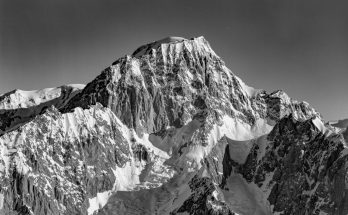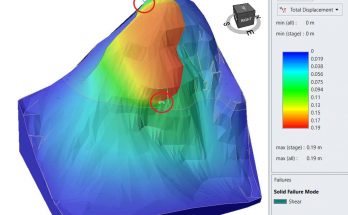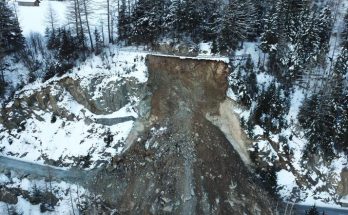Caroline Christinaz
Co-supervisors: Prof. Michel Jaboyedoff, Andrea Pedrazzini
Expert : Dr. François-Joseph Baillifard
The limestone wall of the Crevasse, located in the district of Entremont on the right bank of the Dranse at Sembrancher (VS), presents for a long time signs of instabilities. Its name comes from the cracks on the summit ridge of the wall that demarcates relatively large instabilities. Falling blocks mainly threaten the road, dominated by the Crevasses, which rallies Sembrancher to Vens and is crossed, on average 300 times per day.
This work aims to analyze the risk “falling blocks” in the area downstream of the Crevasse through a multidisciplinary study. The method Matterock serves as a guiding principle for the study of the area of the Crevasse We divided the study into three main phases: detection, analysis and propagation. In the detection phase, an interaction between detailed field observations and geomatics simulations will lead to a more accurate determination of the susceptibility of breach of some volumes present in the wall. To achieve this, factors of slope, kinematic factors, geological and erosion factors will be taken into account. The analysis in the field of instabilities dangerousness and breach susceptibility of portions of the wall is compared to the Index of Susceptibility obtained. The use of LIDAR, the terrestrial laser, will complete the informations and permit to begin a study on the movements present in some parts of the wall. The step on the propagation combines, again, field observations and results obtained through simulations. Finally the road Sembrancher-Vens will take place into a risk study, in adapting the method RHRS (Rockfall Hazard Rating System) on data acquired on the maps of danger, intensity and probability of occurrence.
The results show that the cliff is marked by instability of high dangerousness. The wall seems actually to be cut, in sheets, parallel to the escarpment. However, most of the source areas of falling blocks are located in the centre of the wall, in geologically favourable areas to the failure.
Regarding the study of risk along the route, six sections are defined as high risk. Further study could determine more clearly the high level of risk and protective measures to be implemented. All the information gathered was used to draft a danger zones on the slopes.



